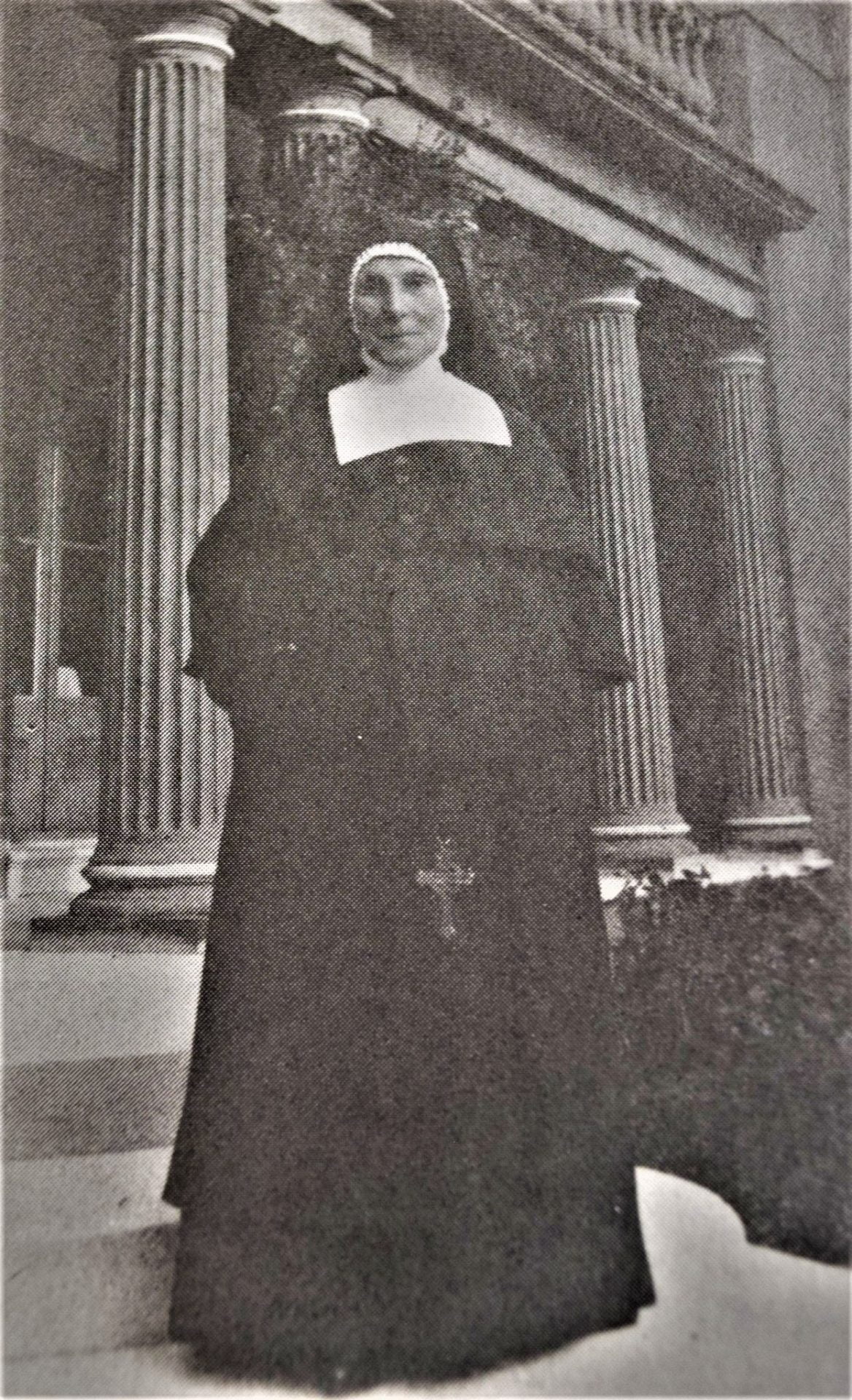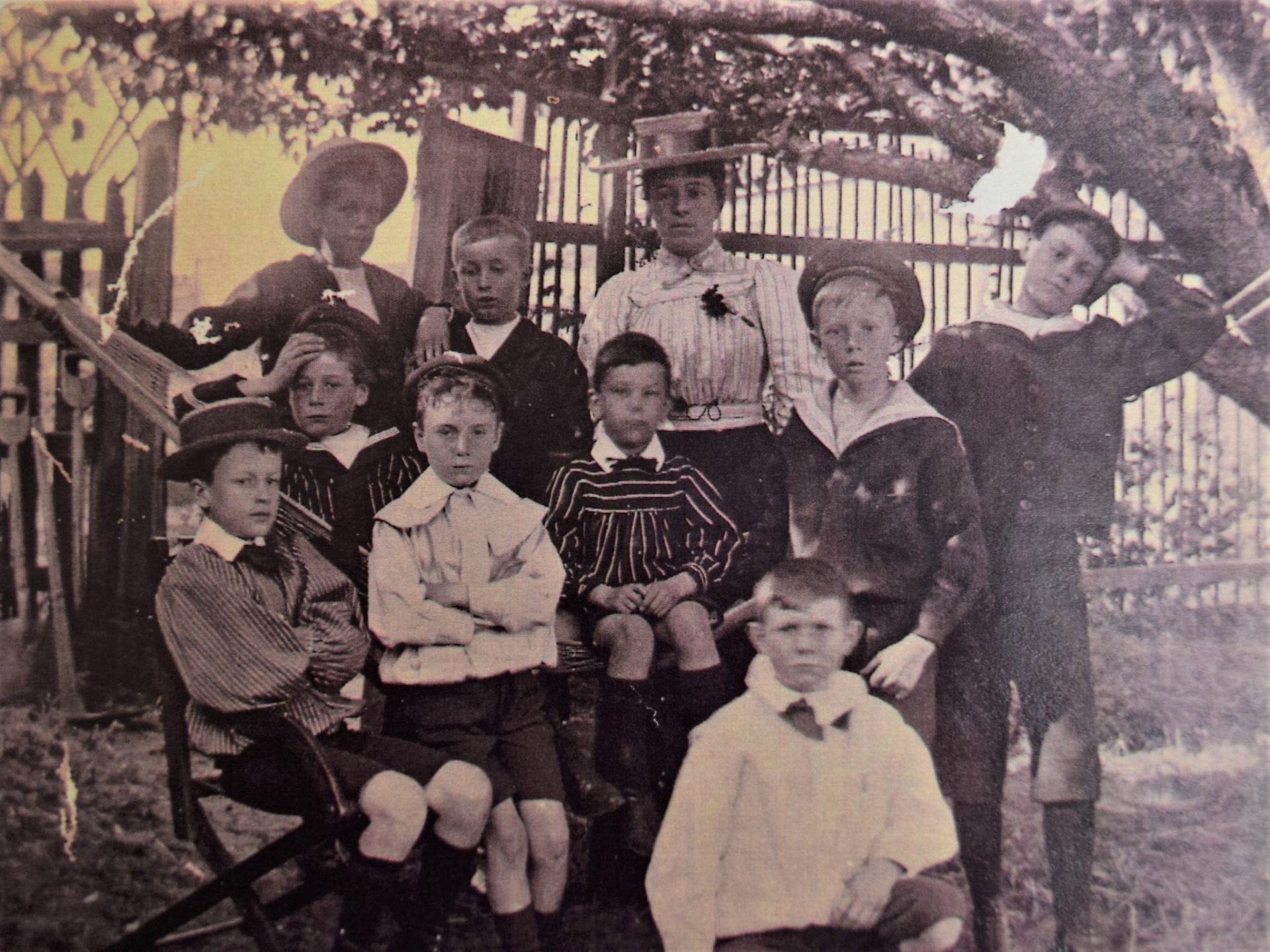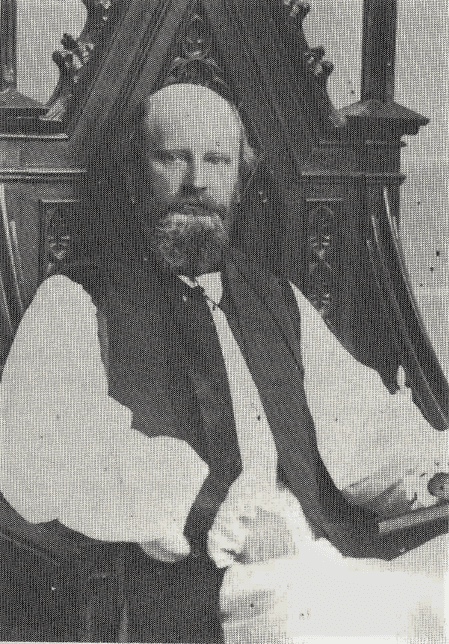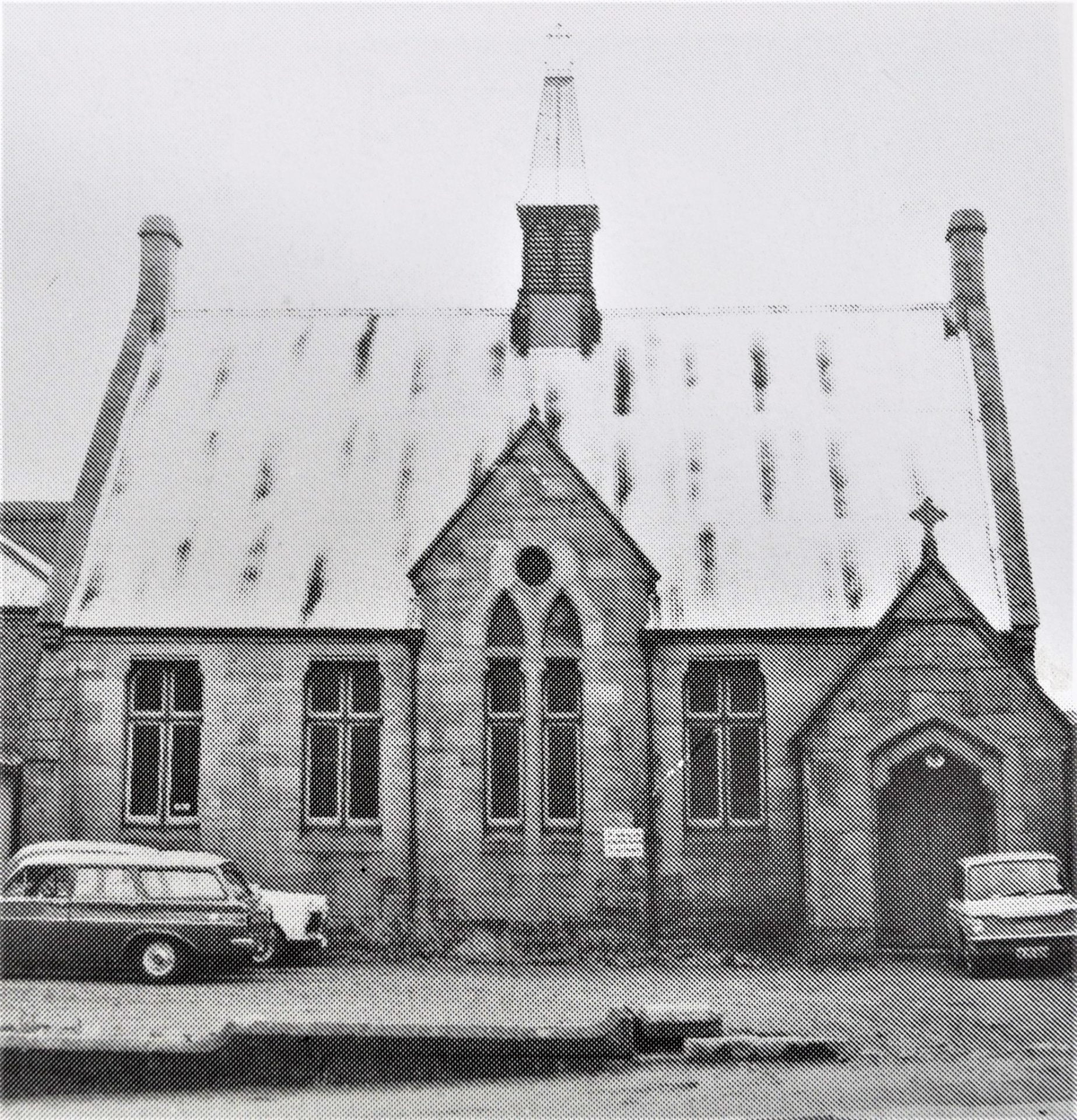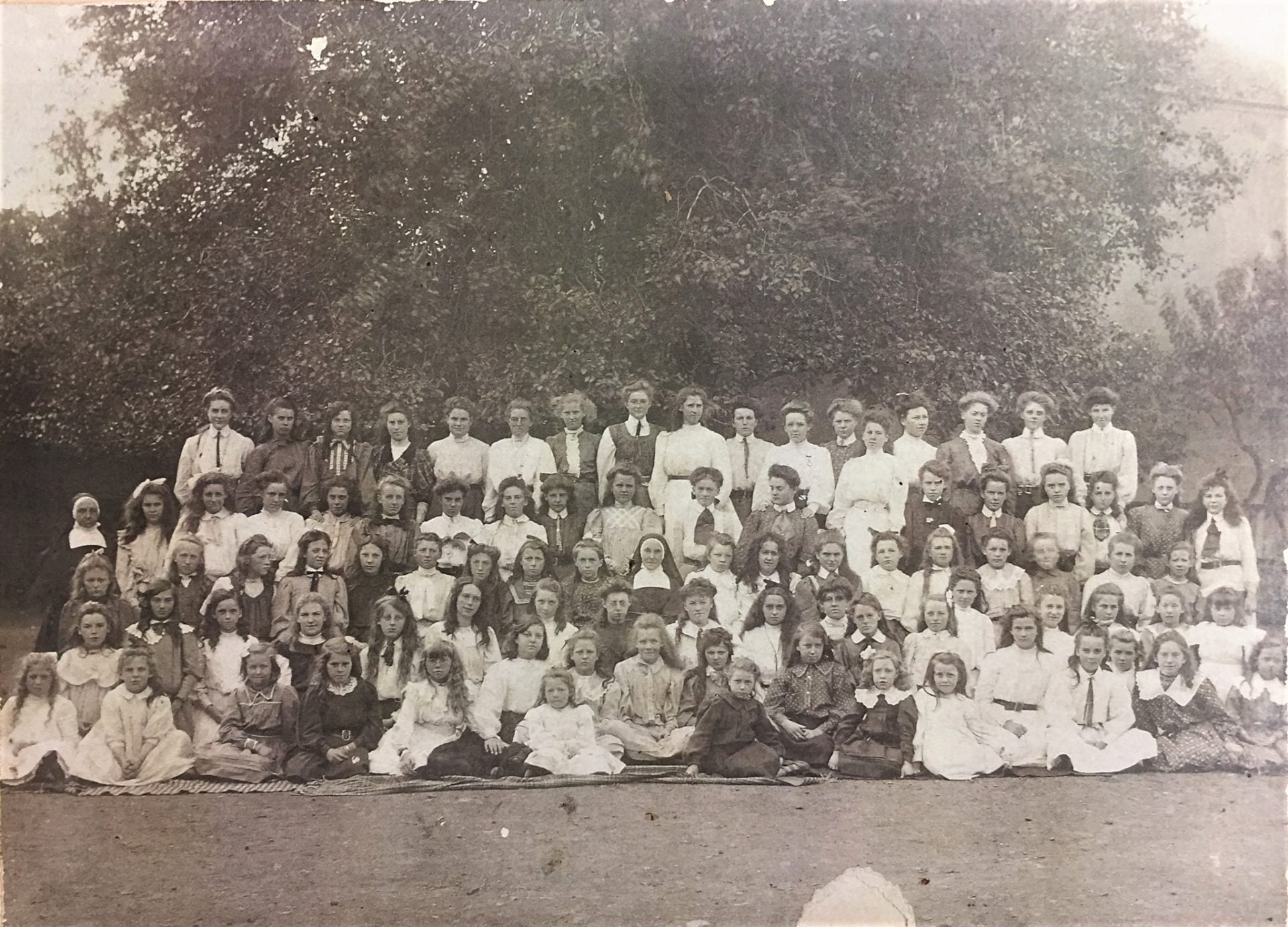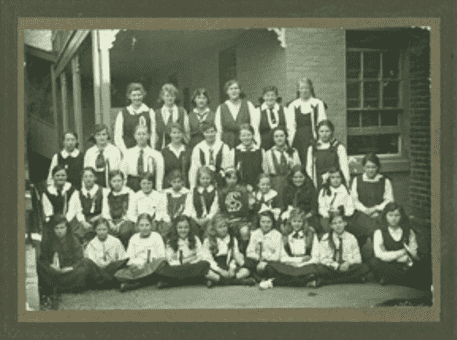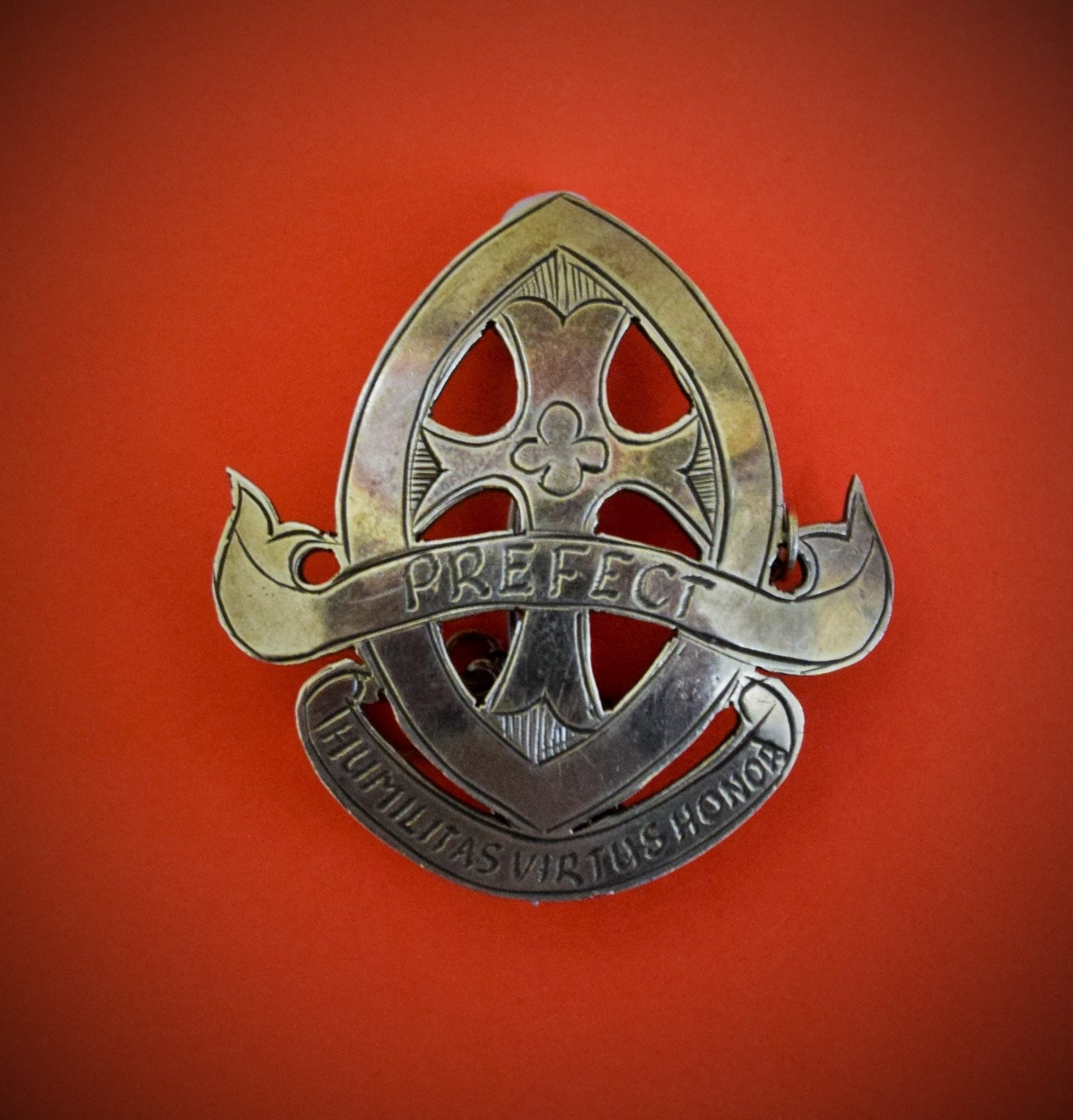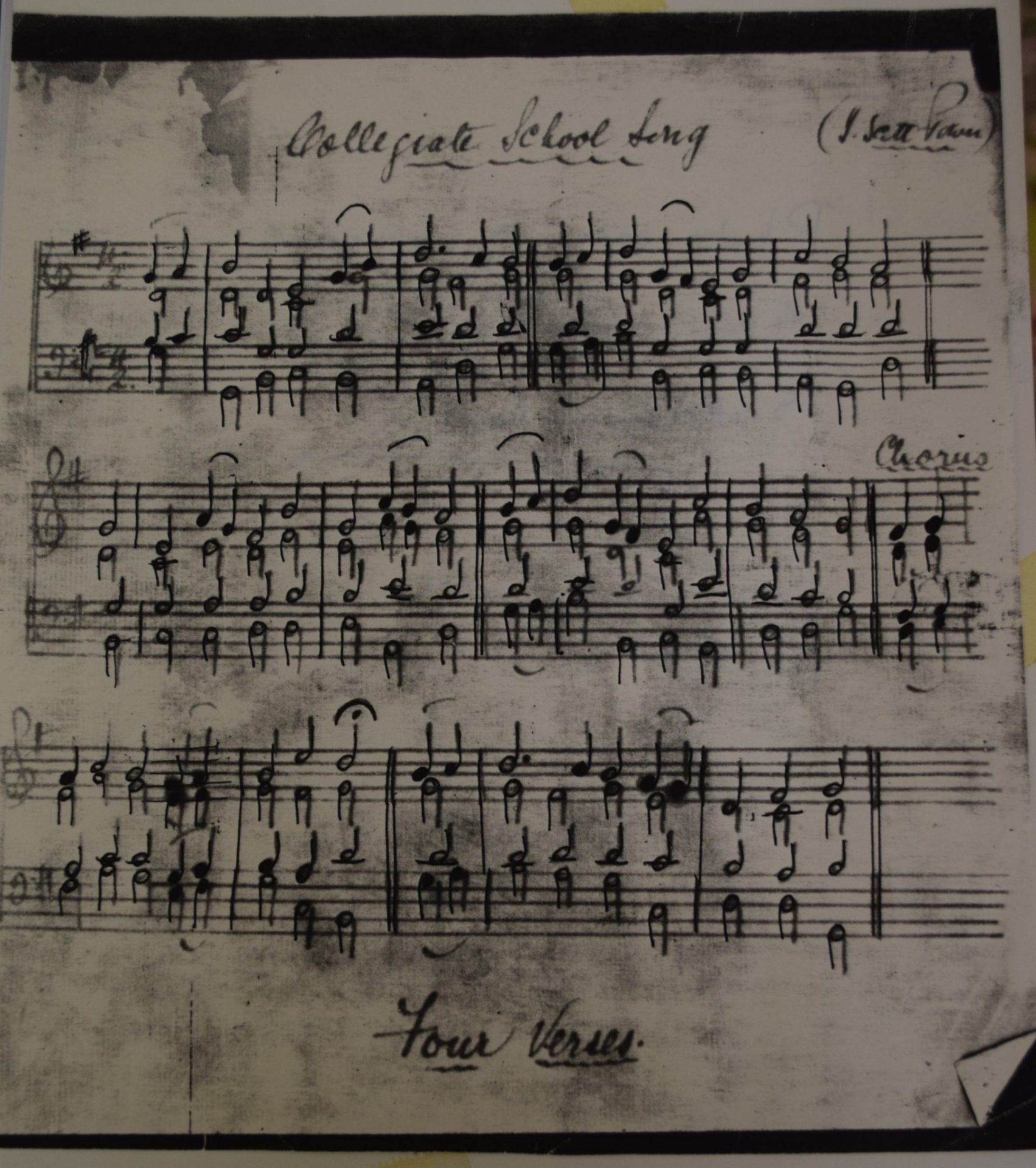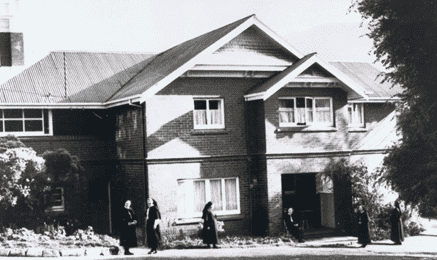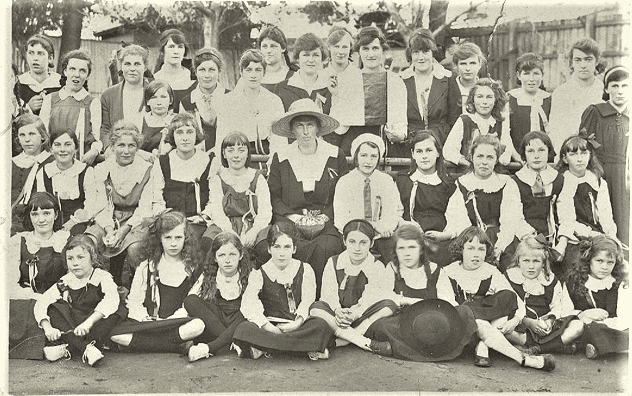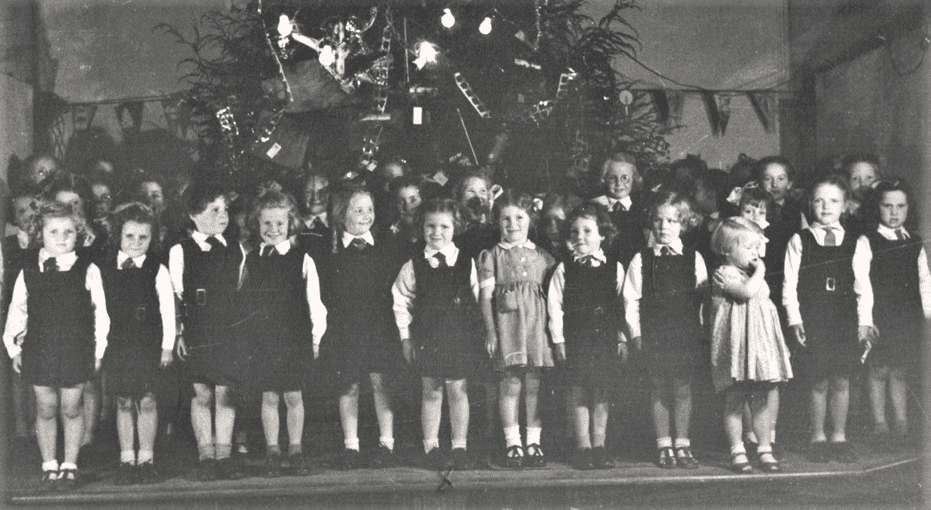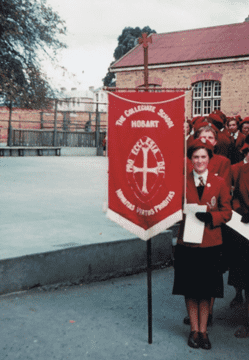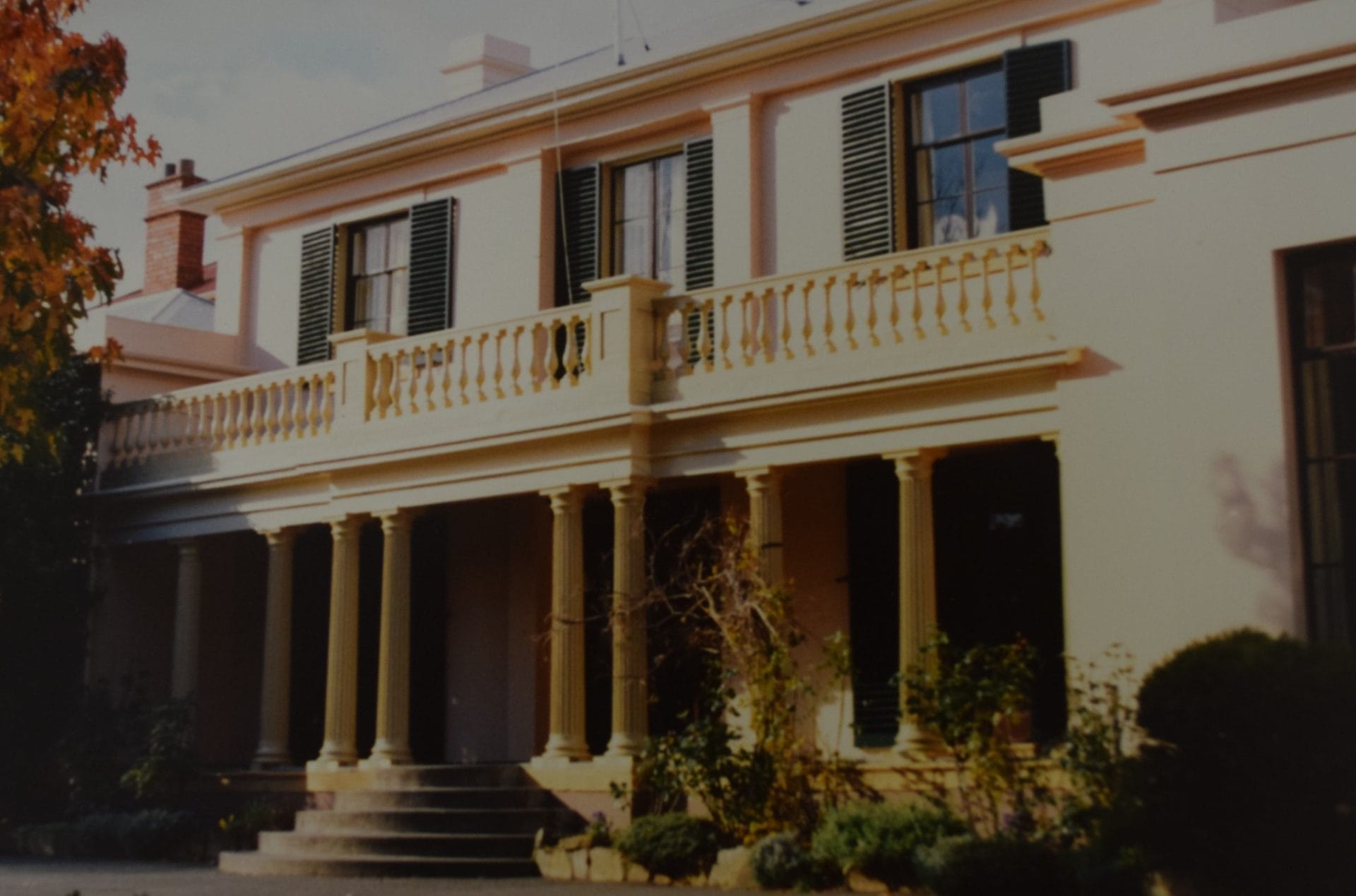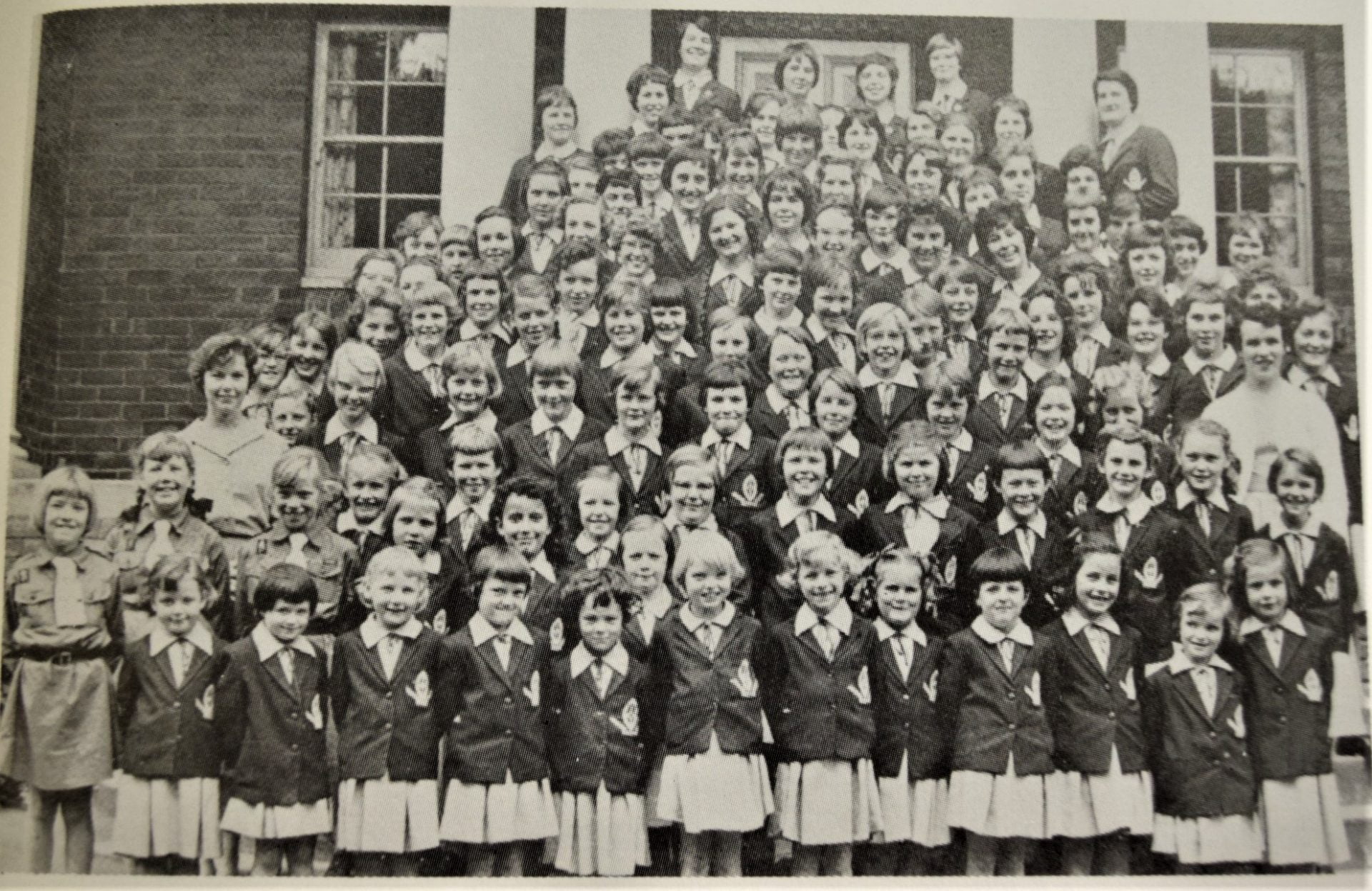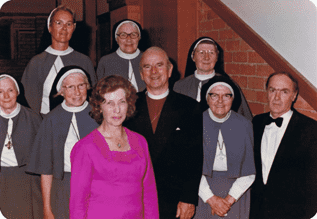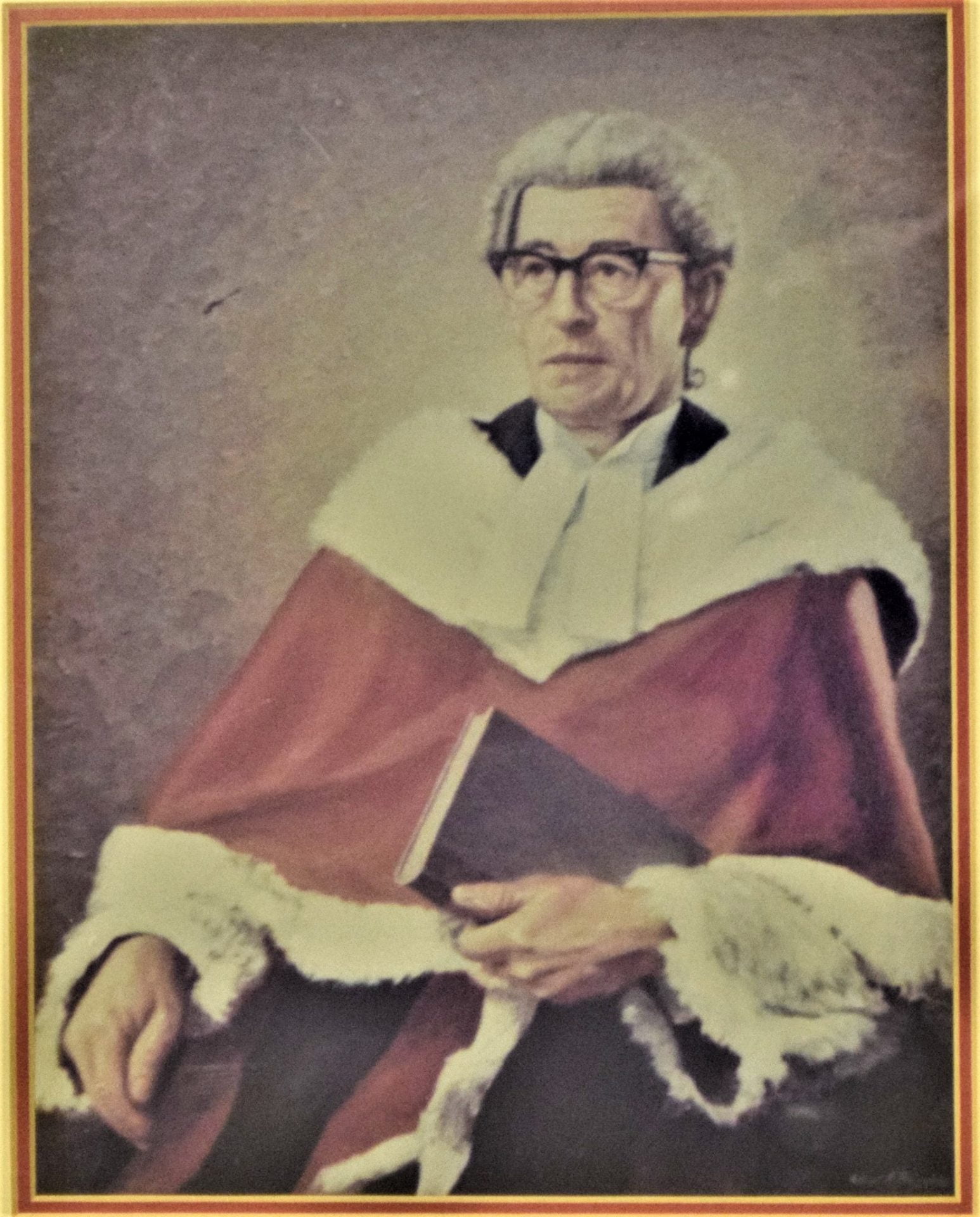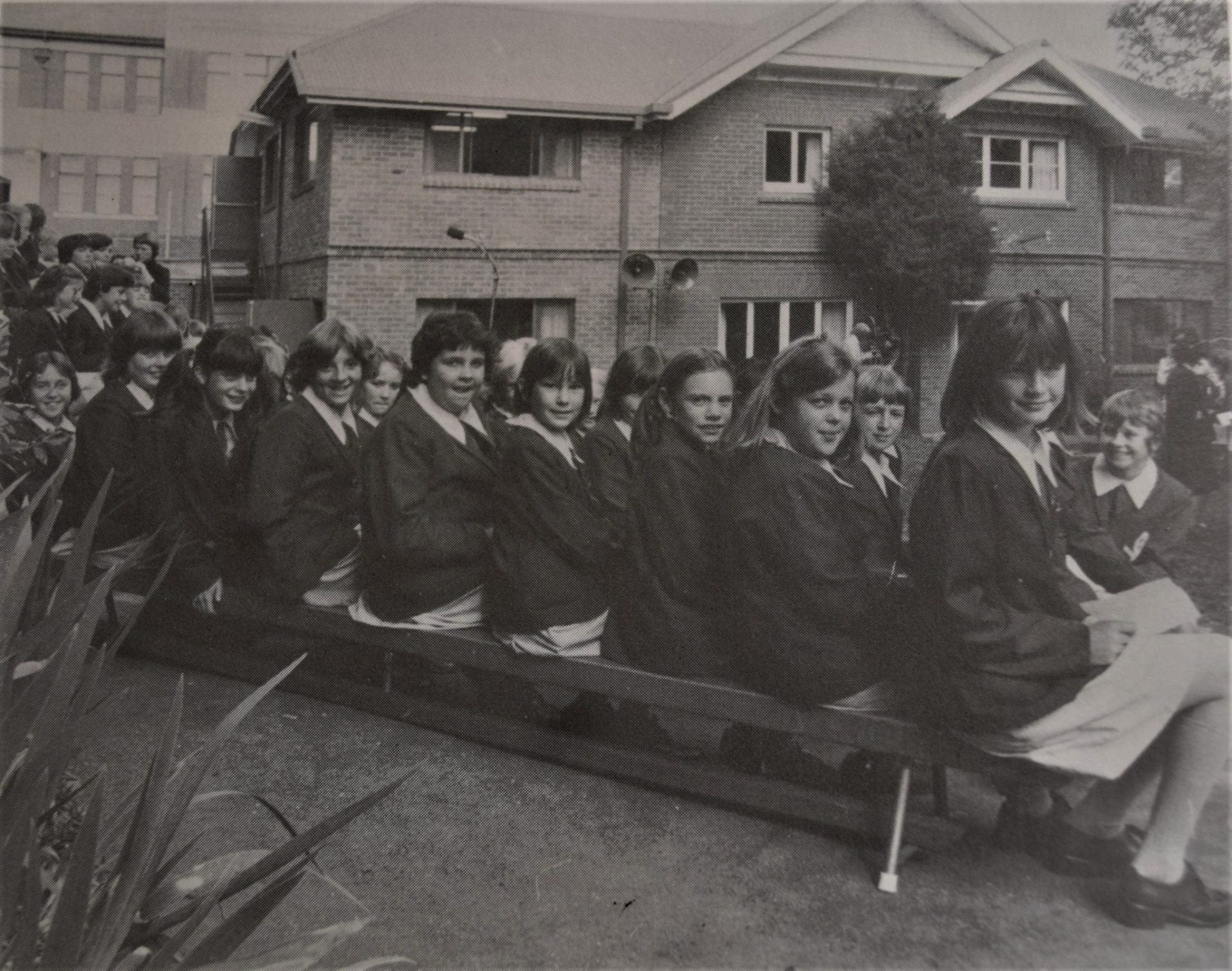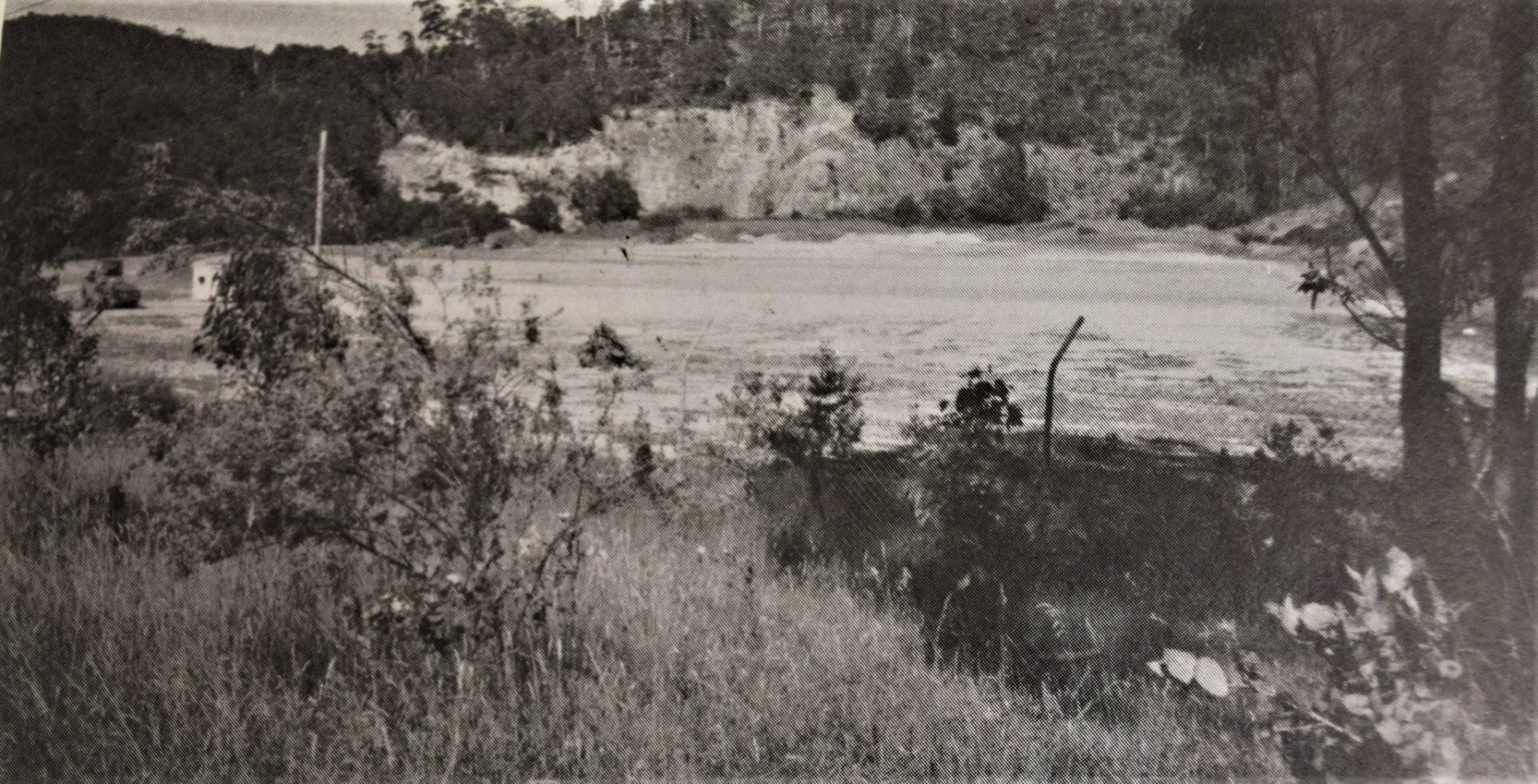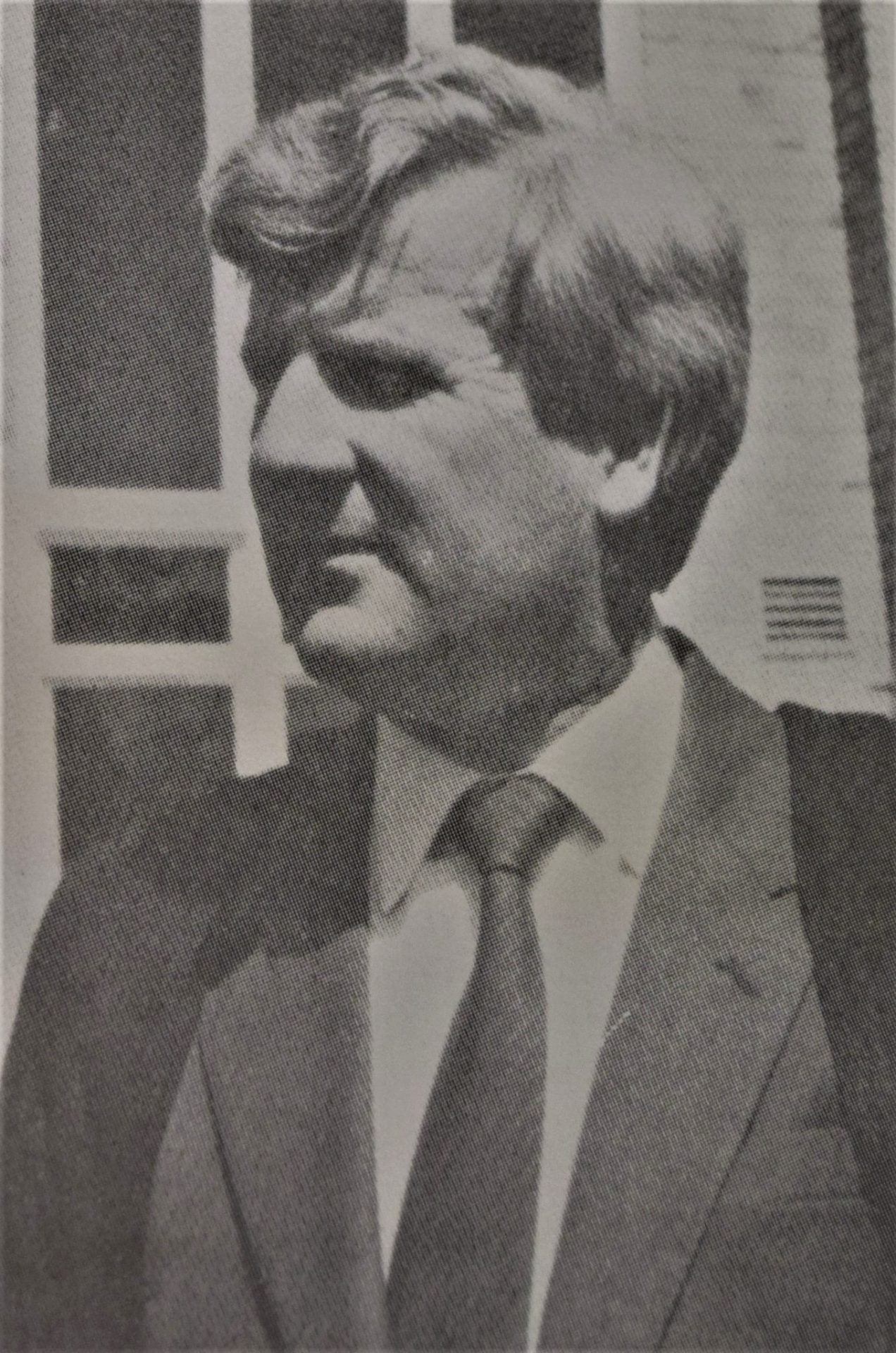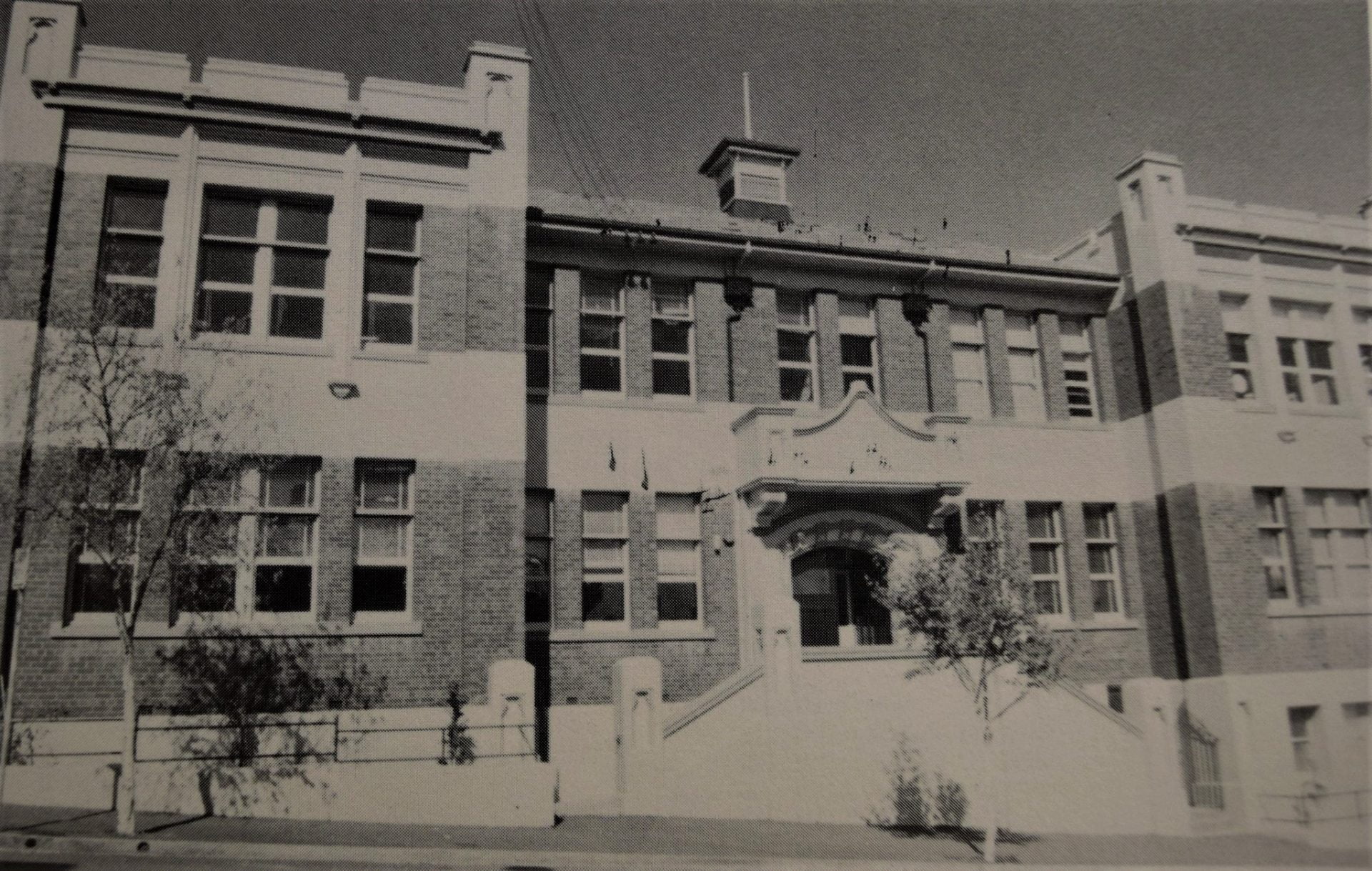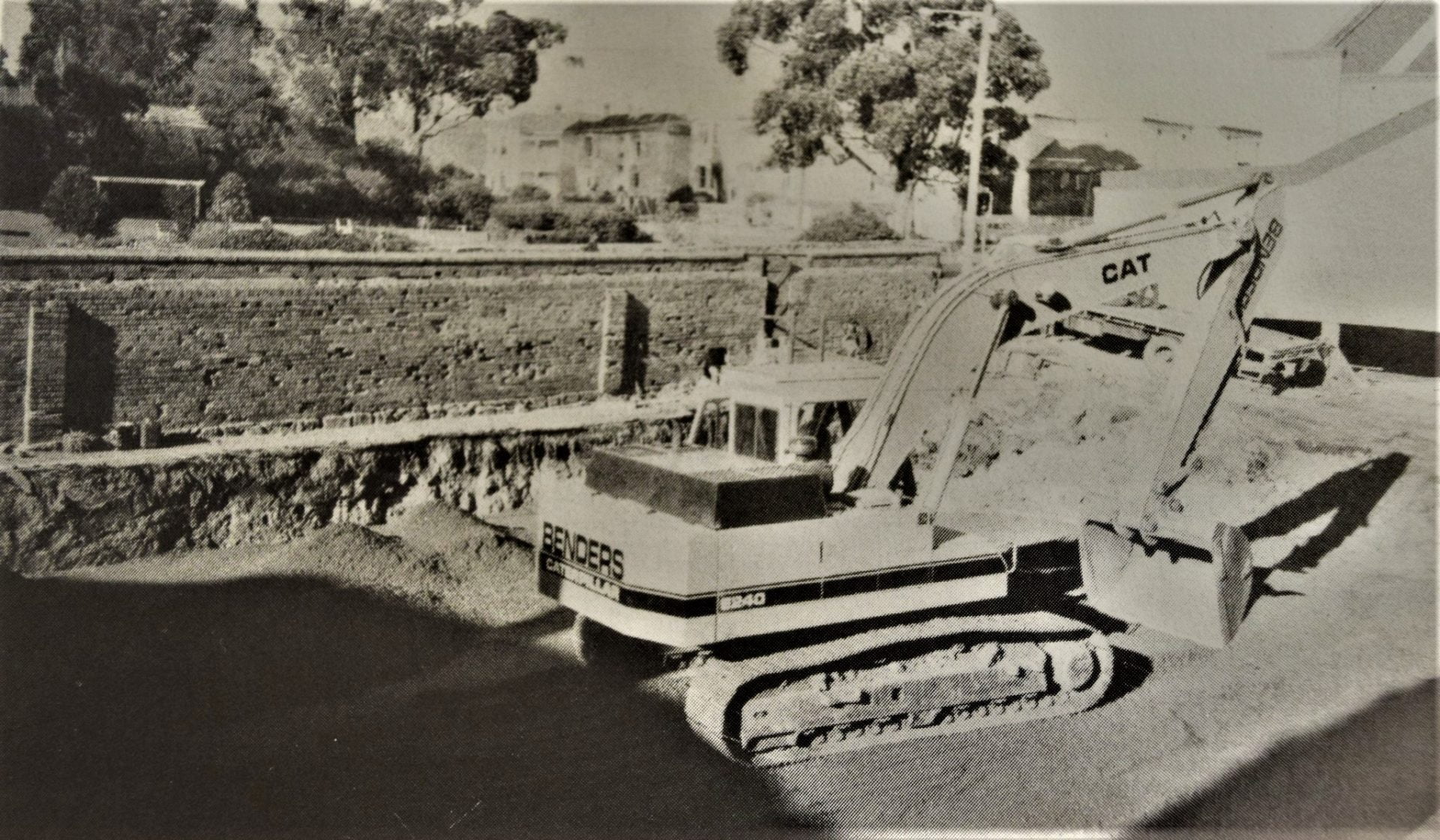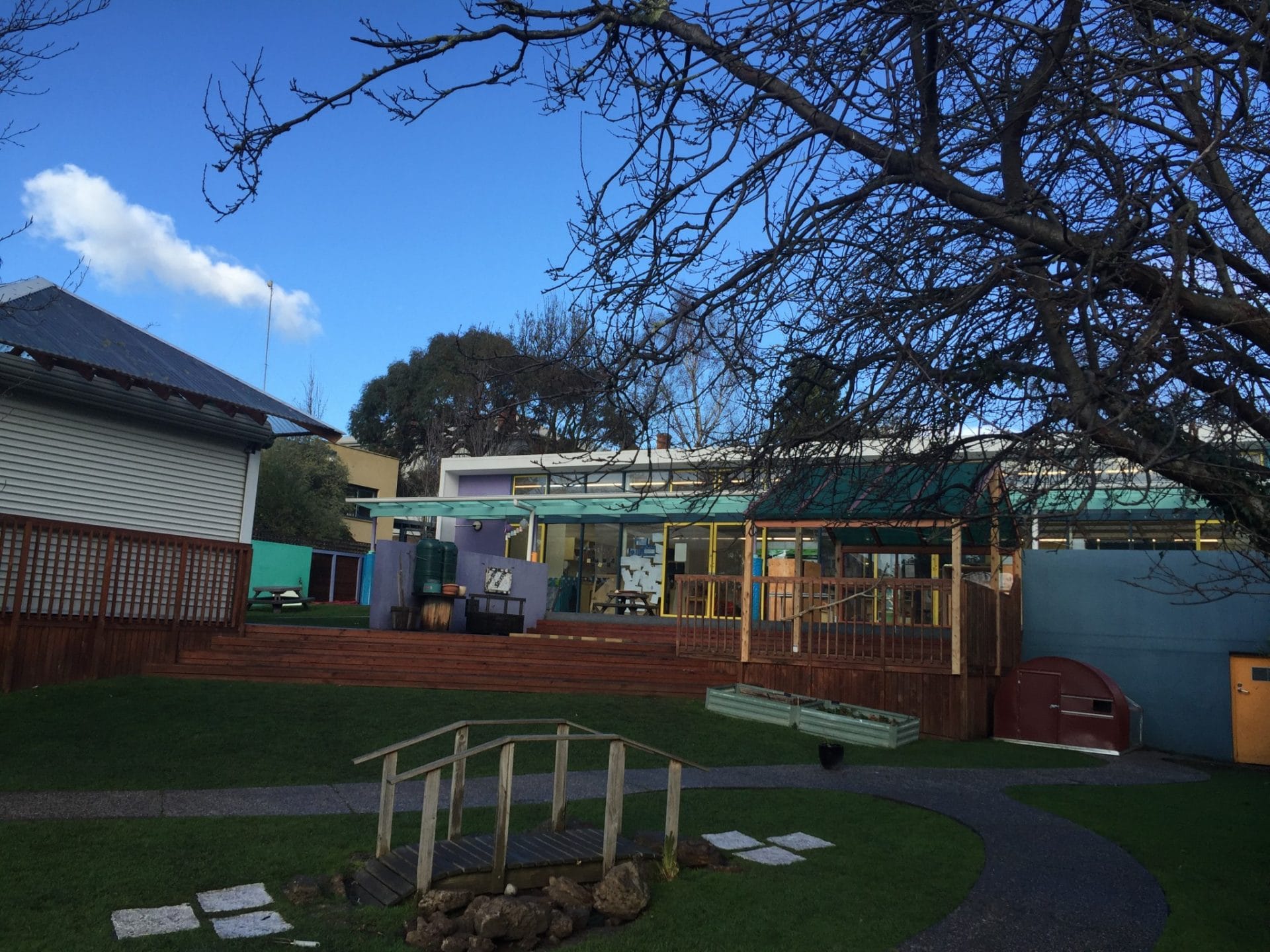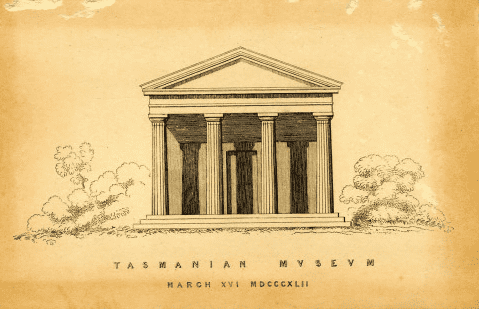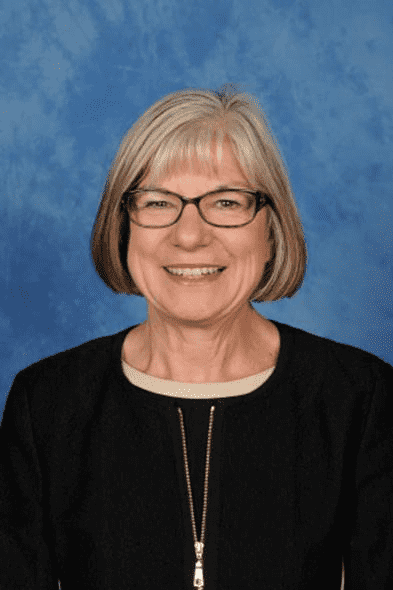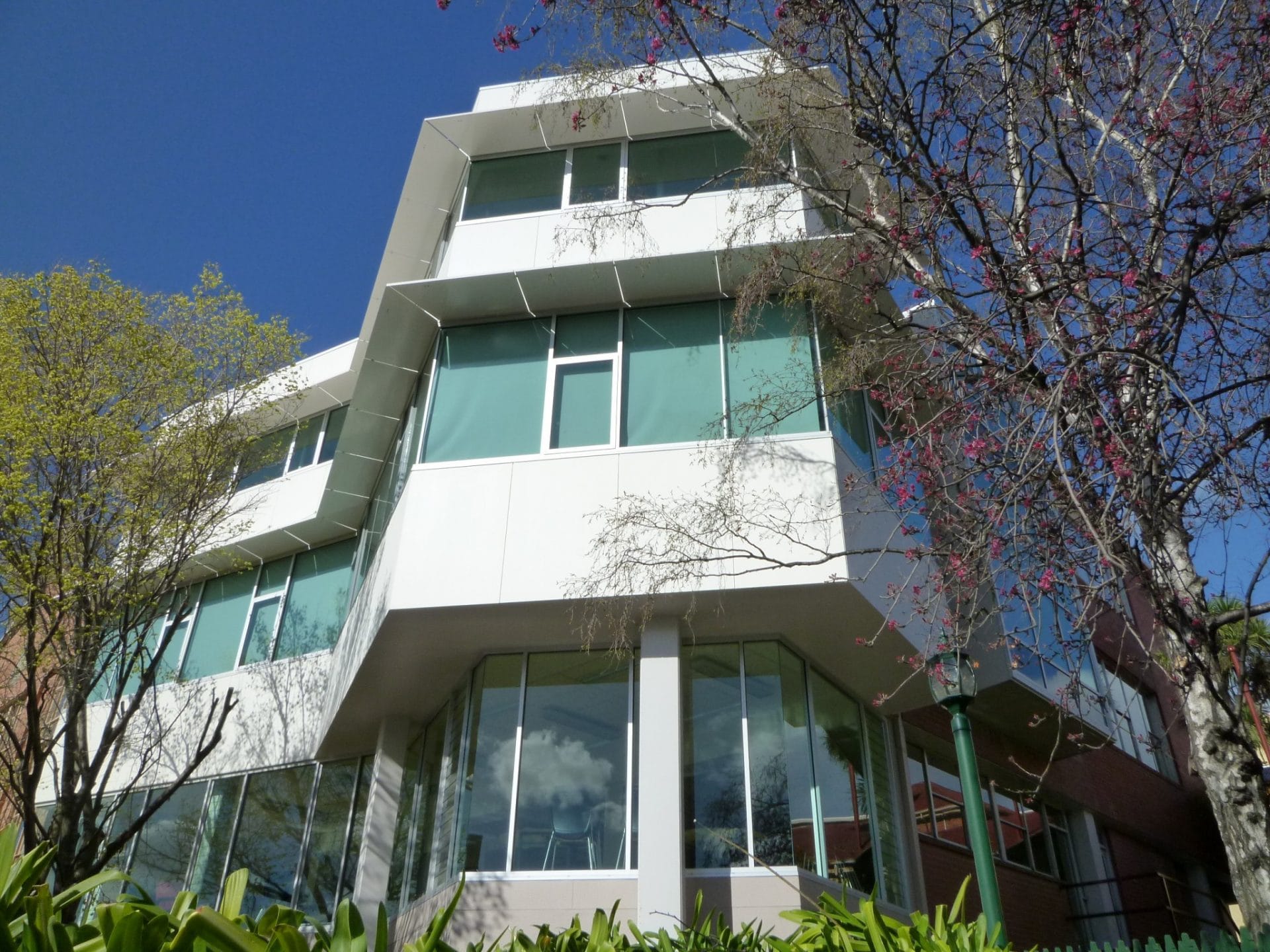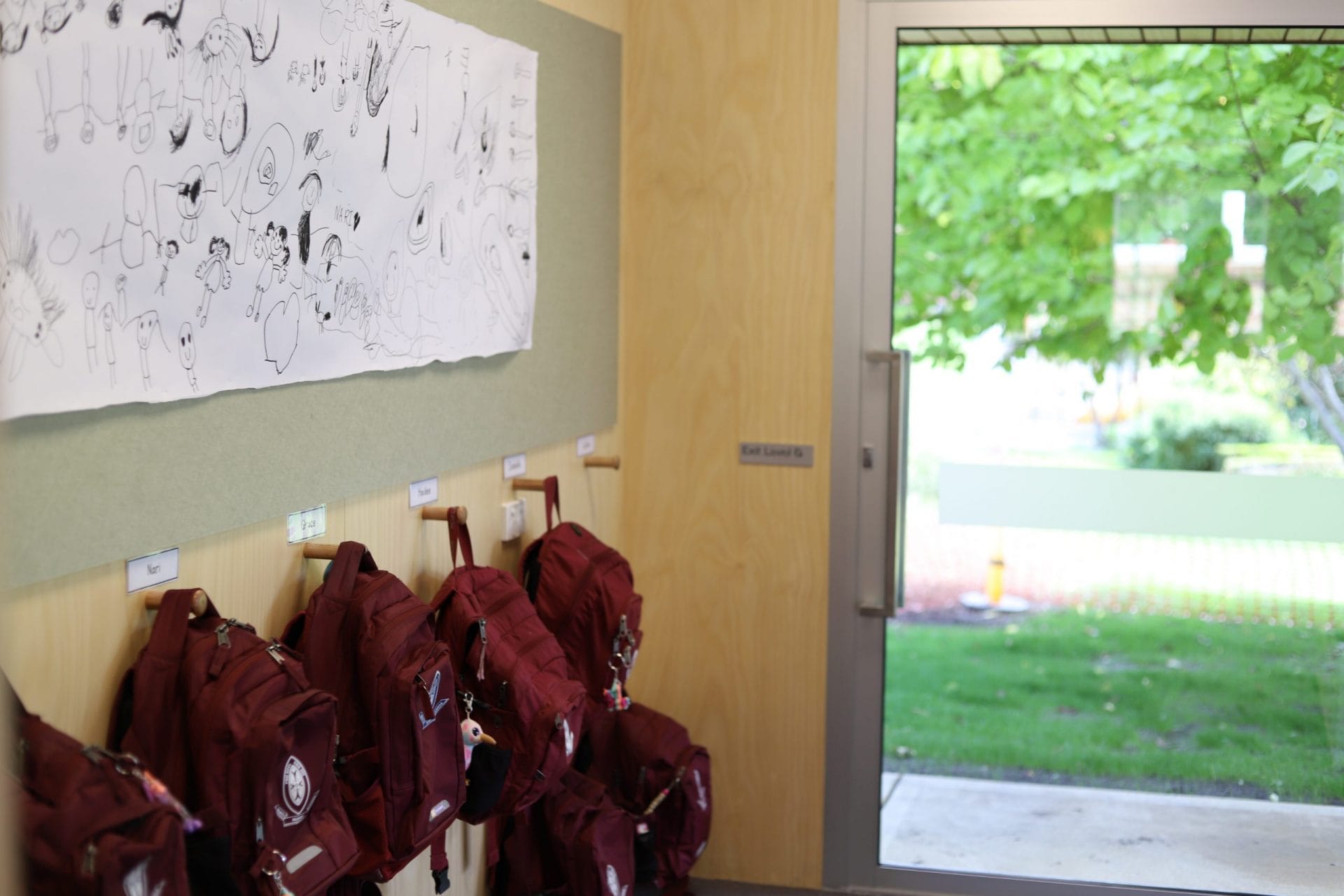Our History
Our History

Dean Dundas
At the end of the 1880s the population of Hobart was approximately 25,000 and growing both by birth and immigration. Only six schools served a student population of approximately 3000. Dean Dundas controversially proposed a Sisterhood should undertake women’s work in the Diocese. The need for social and educational work in Tasmania was eventually recognised and the Dean and Bishop Montgomery ‘sold’ the Sisterhood to the Diocese for general ‘home mission’ work. The Sisters had other ideas though and were determined that their role would be in the creation of a school.
Sister Hannah
Sister Hannah CSC was the first Principal of Collegiate. She left the School in 1895 to start a ‘bun school’ at Holy Trinity.
Sister Phyllis
Sister Phyllis CSC (Jemima Elizabeth Mary Stevens, 1855 – 1940) was born in Suffolk and had been well educated. When Sister Phyllis took the reins of Collegiate in 1895, its course was well and truly determined. She was impassioned with the idea of a really good ‘academy’. Although tiny in stature Sister Phyllis was huge on ambition. Standards, tone and success were hugely important. Sister Phyllis was clearly in charge.
Purchase of Stephenville
Sister Phyllis decided the School would move from St David’s and be established in its own right at Stephenville, one of the most gracious buildings in Hobart and previously the home of the Hobart Ladies’ College. With the Bishop’s approval, Mrs Montgomery arranged the mortgage. Officially opened on 27 July 1895, students included six boarders, with boys’ classrooms behind the hall and separate recess time allocated. ‘Collegiate School’ was painted on the stone outside Stephenville.
Collegiate Girls’ Club
The Collegiate Girls’ Club was formed in March 1897 to forge a link between past & present pupils.
Senior Public Examinations
In 1893 Bertha Smith was the 27th pupil to enrol at Collegiate. She became a pupil teacher and in 1896 brought honour to the school as the first student to succeed in public examinations, obtaining credits in English, History, Geography and Drawing. Her name heads our earliest honour board: Collegiate School University Pass & Honours List. The encouragement given to Bertha, her success and her later return to the School as a teacher were the start of two vital aspects of the nature of Collegiate – academic striving and achievement, and, over the years, the return of Old Girls to teach at their former school.
School Colours
The two School colours, red and white, were chosen by students in 1895. The following June, the boys “looked charming in new white flannel suits, red neckties and belts” for their gymnastics display.
The Sisters arrive in Hobart from England
After departing Kilburn, England on 4 August 1892, seven Sisters of the Church arrived in Hobart aboard the R.M.S Coptic. They were welcomed by Dean Dundas and the Lord Mayor of Hobart. Sisters May, Lucy, Hannah, Rose, Irene, Bridget and Phyllis were accompanied by Miss Lang, Miss Roche, Lily Gardner and five orphans – Linette, Mary, Ethel, Alice and Nettie.
First Junior Public Examinations
The first two girls to sit for their Junior Public Examinations were Ruby Brent and Leila Warner. The first Boarder arrived at the School in this same year, 1894.
Pear Tree Terrace
Planted in 1906, the pear tree was a significant landmark in the grounds of the School for many years. It was part of the orchard planted behind Stephenville in the 1830s by its owner and builder, Alfred Stephen. The tree provided both shade and fruit and was particularly enjoyed by the boarders. The pear tree was felled in 1965 to make way for Chambers. Today the area behind Chambers is referred to as Pear Tree Terrace.
Collegiate School Magazine
The Collegiate School Magazine began in March 1906. In the words of Sister Phyllis “the aim and objective of the magazine is first to establish a bond and union between old and new members of the Collegiate School, and secondly to help forward the budding genius of our girls by providing a periodical where talents may be developed, and a healthy criticism courted.” The girls were responsible for costing, fundraising, content, printing and editing. They gathered subscribers, learnt about printing and editing at The Mercury, gathered, wrote and edited contributions. There were no photographs but there were advertisements, a letter from Sister Phyllis and articles, poetry and School news written by past and current girls. The badge on the front was taken from the badge on Madge’s hatband. Each magazine contained approximately 70 000 words and there were four every year.
Sport at Collegiate
Around 1910 Collegiate invested significantly in sporting facilities – a reflection of the importance the School placed on physical activity. A croquet lawn and grass tennis courts were both established during this period. Basketball, skipping, tennis and croquet were popular sports. Matches were held within the School and against other schools.
Tremayne purchased
There was rejoicing at the purchase of Tremayne, the house on the large block next to Stephenville. Purchased as a Sister’s House in 1916, by 1917 it included three classrooms and a kitchen at the back. Tremayne provided much needed space for classrooms for Forms IIIa, IIIb and IVb; accommodation for mistresses who had been staying away from the school due to the lack of rooms; and, much to the joy of the boarders, a large garden. It also had a sunny verandah where lessons were taught and girls placed several feet apart, during the influenza epidemic of 1919. At the back of the house was Miss Allen’s kitchen, a mulberry tree and a magpie that made chasing tennis balls or picking the fruit a hazard.
The House System
In 1919, the School was divided into three Houses, with Sister Phyllis’ permission. The boarders formed School House with Sister as their President and Miss Sharland as House Mistress. Half the day girls belonged to Dundas House (named in appreciation of Dean Dundas) and the remainder formed Montgomery House (in honour of Bishop Montgomery). Sister was also their President. When the girls returned on Monday 6 October, lists were up in the lobbies stating which girls were in each House, and each had a House Captain, a Tennis Captain and colours. There were competitions in lessons as well as in tennis, cricket, athletics, baseball and rounders.
Prefect system introduced
The prefect system began on 15 February 1912, when Dean Kite presented badges to the prefects and class orderlies. The prefects “are to be responsible for good behaviour and the general tone of the school and that anything detrimental to and inconsistent with the tone of the school is to be checked.” Each prefect was responsible for a class and its orderly who answered to her. Prefects lined the school up for assembly and dismissed them after prayers. They were responsible for order in the passages and in the playground and for stopping any unfairness. There were four house prefects responsible for the boarders. Prefects met with Sister Dora Beatrice CSC each week.
The Collegiate Chapel reopened
In 1913, The Chapel, with its ceiling of polished wood and lined chancel was planned by Sister Phyllis to replace the old chapel that had been outgrown. The Old Girls gave the font in 1943 to mark 25 years of the Sisters’ work. Extensions were carried out in 1958, made possible by the legacy from Archdeacon Whitington in memory of his wife and children.
The Lady Barron Medal
Lady Barron was an occasional welcome visitor to the School. She donated a gold medal, to be held for a year by the most industrious girl, as voted by the Sisters and staff. The first winner was Esther Ellison-Macartney. In 1917 Lady Barron gave a board, carved by Nora Payne, on which the winners’ names were inscribed annually. This tradition continues, with the medal awarded each year at Speech Night. The board has been added to and is in Linmor Hall.
Sisters’ residence opened
Built as the Novitiate, in memory of Mother Emily Ayckbowm, the Sisters’ House was opened in June 1920. The Novitiate moved to Melbourne in 1928. The house was converted into classrooms and opened as the Primary School in 1983, after which upstairs was used for senior school classes while the Development Office was downstairs. In 1993 it was opened by Bishop Newell as Bishop Davies House and from that time it has accommodated the offices of the Principal and Bursar. Photo taken in 1972
Collegiate Old Girls’ Association
The Collegiate Old Girls’ Association was first founded as a club in 1899 and later incorporated as an Association in 1929. On December 15 1927, several old scholars met and resolved to form an Association, to be called The Collegiate Old Girls’ Association. The object was “to further the interests of the School and keep old scholars in closer contact with the School and with each other.” The Constitution was drawn up on 14 February 1928 and the following branches formed: Literary, Chapel, Reunion, Magazine, Annual Fair, Playing Fields, Tennis, Basket Ball, Swimming and Life-Saving, Musical, Dramatic and Social.
The Very Reverend Arthur Richard Rivers
In 1920, the Very Reverend Arthur Richard Rivers became the sixth Dean of Hobart and Chaplain of Collegiate for 20 years. As well as taking services and Divinity lessons, instructing girls for Confirmation and officiating at School events, Dean Rivers donated many prizes each year. He was greatly loved and appreciated by students and staff: “Our best and dearest friend, he is never failing in his kindness and generosity.”
First Inter House Sports
Sister Karina
Sister Karina CSC was Principal from 1936 – 1944. She strove to strengthen academic success at Collegiate. The curriculum was reorganised to allow concentration on either Latin and Mathematics or Science and Art. The Chemistry laboratory was upgraded during her reign and Cooking and Commerce were both removed from the general curriculum and taken as electives.
School House renamed Rivers
In 1935 School House still consisted of boarders only so it was always smaller in numbers than the other two Houses and consequently at a disadvantage in inter-house competitions. It was decided to create a new house of both boarders and day girls so the three houses would be of equal size. A new name was needed and Rivers was chosen for the much loved Dean of the time.
Sister Persis
Sister Persis CSC was Principal from 1934 – 1935. She was born in Australia and graduated from University with a BA and teaching qualifications. She came to Collegiate after a long term at St Michael’s, Melbourne and would have been pleased to greet the contingent of Melbourne girls when they visited for tennis matches and friendship.
New Tremayne opened
When the Sisters had to abandon their plan to move the School to their Sandy Bay site it was decided to increase the facilities on the present campus by building modern classrooms and accommodation for boarders where Tremayne stood; so down it came. On September 19 1931, after a chapel service and a procession led by cross, banner and choir, the foundation stone of the new building was laid by Bishop Hay. Eight months later, new Tremayne, designed by Sister Jean and built at a cost of 6 500 pounds, was opened by the Bishop. It housed six new classrooms (including two science laboratories), cloak rooms, a reception area and boarding facilities. Steps led to the new reception area of the School; Sister’s office was on the left of the entrance and stairs to the boarding house were on the right.
New staff room
What is now Fewtrell Lodge was built in 1949 as a new staff room in honour of Sister Phyllis. It was later became a geography room (Siberia) before being expanded to accommodate the Director of Boarding. It is named after Dean Fewtrell (1942-1958).
Sister Helena
Sister Helena CSC was Principal from 1945-1950. Whilst Sister Phyllis had been bold in her plans for the School, Sister Helena was more cautious, resulting in this being a decade of carefulness. The war years were uncertain times and she was determined to protect the School. Sister Helena called on girls to see life as a vocation, either to motherhood or to a religious life. She maintained that the difference in attending Collegiate was “an attitude that puts Christ at the very centre of the life of the School.”
Jubilee – celebrating 50 years
1942 Although elaborate plans were made, the hard realities of a war-time Jubilee meant that the 50 year celebration was marked by the relatively modest re-roofing of the Chapel, repairing the floor of the Assembly Hall, painting the entrance to the assembly hall, improvement to the telephone passage and a new cover for the incinerator. The School was growing and had made it’s mark in Tasmania.
Passing of Sister Phyllis
At age 85, Sister Phyllis returned to Hobart in the 1940’s “to die in the house, and among the Sisters and friends she loved so well.” It was a sad and significant loss for the School. Sister Dora CSC wrote from Melbourne “You will all understand how I feel. The thought of no little Sister almost staggers me. In June I shall have finished my 47 years with her, and she practically and really guided my life.”
Gladwyn School
Gladwyn was a Collegiate and Hutchins preparatory school at St Peter’s Hall, Sandy Bay. Classes went to Form (Year) III and both academic and sports prizes were awarded annually. In 1946, the numbers had grown to over 60 so Hutchins opened its own Prep and the Collegiate Sisters took over the School. When Gladwyn closed and all pupils were on the Macquarie Street site, a Gladwyn Prize was awarded at every Speech Night until 1961 when the last Gladwyn student left the School. The remainder of the funds invested for Gladwyn prizes were used for a bell in memory of Margaret Burgess, a past Gladwyn pupil, who passed away suddenly just two days before she was due to leave School. This memorial Chapel Bell still hangs in the courtyard near the door to the Chapel. The name lives on in the School: Gladwyn Concerts are held and the Gladwyn building faces Davey…
Name changed to St Michael’s Collegiate School
In her Sister’s letter of December 1951, Sister Gabrielle wrote about the statue of St. Michael pictured on the front of the Magazine. The Rev. Mother had included St Michael’s in the name of the School and had sent the statue for the chapel. This was met with some resistance from Old Girls whose annual service was on St Matthew’s Day, but everyone soon became used to it. It is now hard to imagine important School events without the resounding St Michael’s hymn being sung.
Sister Gabrielle
Sister Gabrielle CSC was Principal from 1951-1952. Under her leadership there was an emphasis on St Michael as the patron saint of the Community and the School. Mother sent a statue of St Michael for the Chapel (now housed at the entrance of Davies). Sister Gabrielle oversaw the completion the plans to buy two additional properties on Macquarie Street.
Sister Dorothea
Sister Dorothea was Principal from 1953 – 1955. Her regime has been described as gentle and she was very much loved by the girls, particularly the Boarders. She was elected as the 5th Mother of the Order in 1962 and held that position for 14 years. In 1963 she returned to visit Collegiate, and also Sisters’ schools in Melbourne, Adelaide and Perth. At Collegiate she gave a long address to the girls about their lives in the changing world. Sister Dorothea introduced more democracy into the way the Order was run, and initiated new clothing for the Sisters – no more traditional black habit. In 2016, Collegiate staff visited Sister Dorothea at Ham Common in England. At 101 years of age she recorded a special video message in the lead up to the Schools’ 125th Anniversary, sharing her fond memories of her time at the School. Pictured is Sister Dorothea and current…
Sister Jessica
Sister Jessica was Principal from 1956-1965 and was a strong force at the helm the School. She oversaw a number of building developments, and inaugurated the building schemes for the Music and Home Arts departments and a modern Science block. Sister Jessica was a wise counsellor and firm friend to many. She left Collegiate in 1965 with the advice that girls should become bricks, “forming a strong wall within the School, standing for what is right and honourable.”
Purchase of Perulia
In November of 1955 Perulia, at 103 Davey Street, was purchased and used for new courses including Domestic Science, Typing, Book Keeping, Shorthand and Business Principles.
Junior School Building
214-218 Macquarie Street had been purchased and was officially opened on November 2 1951 as the Junior School. In the same year, the library was updated – “A good library means a good school.”
Opening of Assembly Hall
Head Prefect Charlotte Bethune is pictured ready to lead the girls’ procession to the opening of the new Hall, (now named Linmor Hall), 1959. The Collegiate Pool and Chambers now occupy the site of the tennis court and old hall seen in the background. Note the name of the School and the old motto, Humilitas, Virtus, Probitas, on the banner.
Sister Elizabeth May
Sister Elizabeth May CSC was Principal from 1966-1968, following her term as Headmistress from 1965 – 1966. In 1966 Collegiate followed its sister schools by appointing its first lay Headmistress, Miss Lilian Powell. Sister Elizabeth May emphasized the role extra curricular activities could play in the development of the whole person.
Library
In 1961 the library was moved from Tremayne to the hall.
Kilburn house
In 1961 Kilburn was inaugurated because it was deemed the increased numbers of students (around 460) necessitated a fourth House. The foundation members were a number of new girls with a certain number from each of the three old Houses. Kilburn, in North West London, is where the Community of the Sisters of the Church was founded by Mother Emily and it was from there that the pioneer Sisters, including Collegiate’s founding Sisters Hannah and Phyllis, left for Australia in 1892.
Justice Chambers
The Honourable Mr Justice D M Chambers QC, Llb was the Chairman of the Inaugural Board of Management of the School. On August 20 1973, in the Matric Common room, Collegiate’s newly formed Board of Management met for the first time. Bishop Davies introduced everyone and spoke about a proposed constitution and the handover conditions. Mr Justice Chambers took the chair and proceeded work through the applications for Principal. On the 23rd, after interviews on the 22nd, Mrs Helen Woodhouse was selected as the first lay Principal of the School. One imagines that the Sisters would have been gratified with the appointment of Justice Chambers: he held many positions in the community including that of Church Advocate and later Chancellor of the Anglican Diocese of Tasmania, and, there had been members of his family associated with the School as students and teachers every year from 1893 and his daughters were students. Chambers…
Mrs H S Woodhouse
Mrs Woodhouse was Principal from 1974 – 1979. She instigated a period of rapid change at Collegiate and emphasized the importance of cultural life at the School – Music, Drama, Art and Craft were all significant parts of the curriculum. All girls took Science, English, Mathematics, History, Geography and Religious Knowledge until the end of Form IV. Modern Greek was added to the traditional French and German. Collegiate was removed from the Schools Board certification to enable a more extended curriculum.
Mrs Susan Gelber
Mrs Gelber was Deputy Principal from 1976 – 1981. She ensured the smooth running of the School after Mrs Woodhouse left and again after Miss Long’s resignation, when she became Acting Principal. Mrs Gelber returned more emphasis to the basics of the curriculum, English and Mathematics. She also oversaw alterations to the Boarding House and transformed the Sisters’ House into a Primary School complete with its own library and grounds. HSC classes numbered a record 80 girls and cooperation with Hutchins was developed further.
School handed to Board of Management
In 1973, the Sisters withdrew from Collegiate. They lacked ‘teaching Sisters’ and passed the school over to a Board of Management and gracefully retired. There were emotional farewells, Cathedral services and many words of appreciation from the entire Collegiate community. The last entry in the School Log Book by the Sisters reads “May God continue to bless this wonderful school as it enters a new era…we are confident it will go from strength to strength.”
Library
One of the final contributions of the Sisters was the completion of a new library and matriculation centre built on the site of the old Junior School on 27 May 1972. It was named the Emily Ayckbowm Library and Building in honour of Mother Emily.
Junior School demolished
In 1971 the Junior School was demolished and a sub-primary school added to the hall block.
Extensive redevelopment
The mid eighties were a period of extensive re development. In 1984 Speech and Drama studios were built in an area under the Emily building, new Chemistry labs were constructed under Chambers and an activities room was developed on the ground floor of Gladwyn. The landscaping of the central and Tremayne courtyards was also complete. In 1985 Gibson Hall was opened for Kindergarten and Transition. In 1986 Broughton was purchased and converted to English classrooms. In 1987 the Coach House behind Broughton was purchased and converted for pottery.
New Jerusalem
Jerusalem was rebuilt and officially opened on Founders’ Day in 1986.
Miss M B Long
Miss Long was Principal from 1980 – 1981. In her Speech Night address she spoke of the advantages of a single-sex education for girls. She also spoke of the increasing cooperation with Hutchins in order to expand the subjects available to HSC students on both campuses. Collegiate offered combined classes in Social Psychology, Art, Speech and Drama and Ancient History. A second bus was purchased to facilitate movement between both schools, sorts grounds and excursions.
Ham Common
In May 1988 land was leased in Proctors Road to provide playing fields. This site, to be known as Ham Common, was later levelled and filled in 1989 to accommodate a 400m track or two hockey fields. Ham Common was officially opened in 1991, the Old Girls’ Pavillion opened in 1992 and 1995 saw the development of the tennis courts.
Mr D W McNeill
Mr Dan McNeill was commissioned as the new School Principal in July 1983 and subsequently served a 20-year period at Collegiate. During this time alterations, innovations and improvements to the School fabric and curriculum were made; of note was the introduction of laptops in 1992. His mantra was that Collegiate had to nurture all kinds of students, whether their talents were in the academic classroom on a sports ground, or a concert platform.
Sisters’ community house and Clonmel
In July 1983 what had been the Sisters’ Community House opened as the Primary School. In the same year, Clonmel was purchased as the Principal’s residence.
The Collegiate Pool
Uniform Change
1999 saw the removal of gloves and winter hats from the uniform. The brown and beige uniform was updated to the red, white and blue.
Anglesea development
In the early nineties, further property was acquired at Angelsea. In 1990 Waikare was acquired, followed by Tangara and Manganinnie in 1992.
Notebook computers
Collegiate led the way with technology in education by introducing notebook computers in 1992.
Mrs R Kronenberg
Mrs Robyn Kronenberg commenced in June 2003 and during her eleven and a half years as Principal, major capital works were undertaken on the three campuses and the curriculum benefited from expansion and accreditation with the Council of International Schools. Mrs Kronenberg enhanced the quality of teaching, which included increases in professional learning for all staff.
Mrs J Tudball
Mrs Judith Tudball commenced as Principal in January 2015. During her tenure, Judith guided a whole of school curriculum review and worked closely with the Board to begin implementing a future-oriented strategic design. Advanced planning for an outstanding new STEM facility and the establishment of the School’s first Office of Philanthropy were key achievements during Judith’s term, together with the launch of a new website and the myCollegiate Parent Portal. Judith led the School through a joyous and highly successful 125th celebration year.
125th Anniversary
Collegiate celebrated its 125th Anniversary throughout 2017. A spectacular 125th Anniversary Celebration Concert was held at Federation Concert Hall in Hobart on Saturday 2 September and attended by over 650 members of the Collegiate community. The highlight of the evening was the world premiere of the School’s special commissioned work by renowned Australian choral composer, Mr Paul Jarman. The piece ‘Set for Life’ was performed by massed Collegiate choirs and captured the true essence of the School.
Dr Adam Forsyth
Dr Adam Forsyth commenced as Principal in 2018 and brings impressive leadership experience across the teaching and learning, pastoral care, boarding, staff and community sectors. His previous roles include Deputy Headmaster at The Hutchins School; Head of Senior School at St Peters Lutheran College in Brisbane; Director of Boarding and Senior Housemaster, and Dean of Studies at Brisbane Boys’ College; and Deputy Director of the Summer School at Concord College in Shropshire, England. Dr Forsyth is a Lay Canon of St. David’s Cathedral in Hobart.
Junior School House System
The House system was expanded to include all Junior School students.
IFLab
IF Lab’s doors opened for our students and the broader community to access collaboration spaces, teaching and learning spaces, a digital fabrication laboratory equipped with a bank of 3D printers, an augmented and virtual reality space, wet and dry laboratory spaces, spaces for displaying and interacting with models, a greenhouse and even a platform for conducting gravity experiments. Students will harness technology to enhance their coursework learning as well as opportunities outside of the timetable. They will participate in projects exploring innovative solutions to real-world problems.
Pool annex
The pool annex on Pear Tree Terrace was opened.
Ms Cawley Farrell
Cawley grew up in Newfoundland and was educated in Canada before migrating to Australia in 1986. In 1990 she was appointed Head of the Faculty of Art at Collegiate and also held an artist residency at IASOS, UTAS. In 1994 she was promoted to the senior position of Head of Pastoral Care (K to 12). After taking time to have her daughter Isabella (Leaver 2013) she returned to the position of Head of Girls in 1997, and in 2004 was appointed Deputy Principal, a position she held until her retirement on 12 March 2020.
Mrs Deb Williamson
Mrs Deb Williamson took over as Deputy Principal. Deb is a former student of Collegiate and returned as a teacher in 2005. Deb worked in a variety of areas across the School from, the Literacy Coordinator for Prep to Year 6, Director of the Enrichment, Differentiation and Gifted Education (EDGE) Program, Head of Middle School, then Head of Junior and Middle School before taking on the Deputy Principal role.


